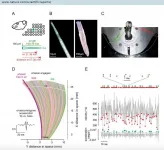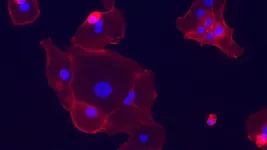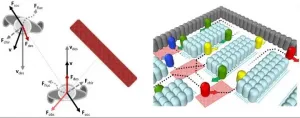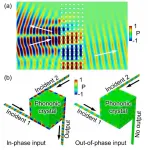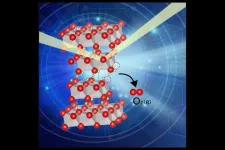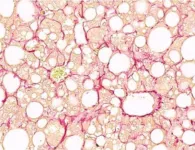(Press-News.org) MORGANTOWN, W.Va.--Just as helicopter traffic reporters use their "bird's eye view" to route drivers around roadblocks safely, radiation oncologists treating a variety of cancers can use new guidelines developed by a West Virginia University researcher to reduce mistakes in data transfer and more safely treat their patients.
Ramon Alfredo Siochi--the director of medical physics at WVU--led a task group to help ensure the accuracy of data that dictates a cancer patient's radiation therapy. The measures he and his colleagues recommended in their new report safeguard against medical errors in a treatment that more than half of all cancer patients receive.
"The most common mistake that happens in radiation oncology is the transfer of information from one system to another," Siochi, the associate chair for the School of Medicine's Department of Radiation Oncology, said. "This report gives you a good, bird's-eye view of the way data is moving around in your department."
"How frequently do these accidents occur? I think one estimate I saw was that three out of every 100 patients might have an error, but it doesn't necessarily harm them. Now, I don't know what the incidence rate is of errors that are quote-unquote 'near misses'--when an error happens before it hits the patient--but I would imagine it is much higher.
Siochi recently chaired the Task Group of Quality Assurance on External Beam Treatment Data Transfer, a division of the American Association of Physicists in Medicine.
The group was formed in response to news coverage of radiation overdoses caused by faulty data transfer.
"In 2010, it was reported in the New York Times that a patient [in a New York City hospital] was overdosed with radiation because the data somehow didn't transfer properly from one system to another," Siochi said. "Long story short, the patient received a lethal dose of radiation to his head that went on for three days undetected. Now, that falls into the general class of many things happening that were not standard practice. But it could have been avoided."
Radiation therapy is used to treat a variety of cancers, including cancers of the lung, pancreas, prostate, breast, brain and bladder. Depending on a cancer's type or stage, radiation may cure it, shrink it or stop it from coming back.
But as the complexity of radiation therapy has grown--making it possible to target cancers that would once have been too difficult to treat--so too has the amount of data that goes into treatment machines. With more data comes more opportunity for errors.
When Siochi started practicing radiation oncology physics--in the 1990s--this data evoked a tree-lined residential street more than the six-lane highway it brings to mind today.
"It was very analog," he said. "We're talking maybe 20 parameters that you would need to check on a plan, and you would put it all on a paper chart. But I once did a calculation--to do an order of magnitude--and now we're talking about 100,000 parameters. It's just impossible for a human to check."
The group's report--which earned the approval of AAPM and the Science Council--makes that volume of parameters less overwhelming. It explains how data is transferred among various systems used in radiation therapy, and it suggests ways that medical physicists can test the data's integrity throughout the process, contributing to safer treatments.
INFORMATION:
Citation
Title: Report No. 201--Report of Task Group 201 of the American Association of Physicists in Medicine: Quality Management of External Beam Therapy Data Transfer
Link: https://aapm.onlinelibrary.wiley.com/doi/10.1002/mp.14868
How we sense texture has long been a mystery. It is known that nerves attached to the fingertip skin are responsible for sensing different surfaces, but how they do it is not well understood. Rodents perform texture sensing through their whiskers. Like human fingertips, whiskers perform multiple tasks, sensing proximity and shape of objects, as well as surface textures.
Mathematicians from the University of Bristol's Department of Engineering Mathematics, worked with neuroscientists from the University of Tuebingen in Germany, to understand how the motion of a whisker across a surface translates texture information into neural signals that can be perceived by the brain.
By carrying out high ...
Scientists have found new evidence of menopause in killer whales - raising fascinating questions about how and why it evolved.
Most animals breed throughout their lives. Only humans and four whale species are known to experience menopause, and scientists have long been puzzled about why this occurs.
Killer whales are a diverse species made up of multiple separate ecotypes (different types within a species) across the world's oceans that differ in their prey specialisation and patterns of social behaviour.
Previous studies have found menopause in an ecotype called "resident" killer whales whose social structure appears to favour "grandmothering" (females using their energy and knowledge ...
When a doctor gives a patient antibiotics for a bacterial infection, they usually require them to finish the entire treatment, even when symptoms go away. This is to ensure the drugs kill off any remaining bacteria. Cold Spring Harbor Laboratory (CSHL) Visiting Scientist Raffaella Sordella investigated a similar problem that occurs in some lung cancers.
Approximately 15% of non-small cell lung cancers have a mutation in a growth receptor called EGFR, causing tumor cells to grow uncontrollably. Researchers developed an effective drug that inhibits EGFR and ...
A Skoltech team has developed a model for assessing infection risks for supermarket customers. The researchers believe that their model will help formulate scientifically backed rules for safe shopping during the pandemic. The paper was published in PLOS One.
The team included professor Maxim Fedorov, who serves as Skoltech's Vice President for Artificial Intelligence and Mathematical Modeling, and a research group led by professor Nikolai Brilliantov -- the Director of the Skoltech Center for Computational and Data-Intensive Science and Engineering (CDISE).
The composite model presented in the paper incorporates ...
LEXINGTON, Ky. (July 13, 2021) -- A recently published study co-authored by University of Kentucky Sanders-Brown Center on Aging researcher Justin Miller, Ph.D., identifies 11 rare candidate variants for Alzheimer's disease. Researchers found 19 different families in Utah that suffered from Alzheimer's disease more frequently than what is considered normal.
Miller, an assistant professor in the UK College of Medicine, was a co-first author for the study published in the journal Alzheimer's & Dementia. The work was started at another university, however, some of the computational work was done after Miller arrived at UK in March.
For the study, genetic sequencing was conducted on two cousins from each of the 19 families. Miller says they then identified genetic variants that were shared ...
Automation of technology has reshaped both the way in which we work and how we tackle problems. Thanks to the progress made in robotics and artificial intelligence (AI) over the last few years, it is now possible to leave several tasks in the hands to machines and algorithms.
To highlight these advances, in the July 2021 issue, IEEE/CAA Journal of Automatica Sinica features six articles covering innovative applications of AI that can make our lives easier.
The first article, authored by researchers from Virginia Tech Mechanical Engineering Department ASIM Lab, USA, delves into an interesting mixture of topics: intelligent cars, machine learning, and electroencephalography (EEG). Self-driving cars have ...
The concept of topological phases have not only revolutionized our understanding of physics or materials, but also brought about new possibilities for applications. Recent advances in higher-order topological insulators show that multiple forms of topological states can exist at boundaries of different dimensions, which greatly enriched the potentials for diverse applications. Interesting, the topological phases can also be implemented in artificial structures in photonics, electromagnetism, and acoustics.
A recent work co-led by Dr. Guancong Ma from Hong Kong Baptist University and Dr. Ying Wu from King Abdullah University of Science and Technology explored the controlling sound propagation with topological modes at different dimensions. They designed and built ...
One in ten school-aged children in Australia have a current diagnosis of asthma. Every year, there are around 40,000 asthma hospitalisations and over 40 per cent of these are in children aged younger than 14 years old.
Approximately 80 per cent of these asthma-related hospital presentations are potentially avoidable through a standardised comprehensive care pathway for children with asthma.
These preventative measures include the use of evidence-based clinical guidelines, ensuring that there is an asthma action plan in place; regular follow-up with GP; provision of asthma education to parents/carers; and establishing ...
A research group has produced fresh insights about the release of oxygen in lithium-ion batteries, paving the way for more robust and safer high-energy-density batteries.
Next-generation batteries that store more energy are critical if society is to achieve the UN's Sustainable Development Goals and realize carbon neutrality. However, the higher the energy density, the higher the likelihood of thermal runaway - the overheating of batteries that can sometimes result in a battery exploding.
Oxygen released from cathode active material is a trigger for thermal runaway, yet our knowledge of this process is insufficient.
Researchers from Tohoku University ...
Non-alcoholic fatty liver disease is the most common liver disorder worldwide and is present in approximately 25 percent of the world's population. Over 90 percent of obese, 60 percent of diabetic, and up to 20 percent of normal-weight people develop it. A key feature of the condition is the accumulation of fat in the liver. A liver can remain fatty without disturbing normal function; however, fat accumulations may progress into a so-called non-alcoholic steatohepatitis - an aggressive form of the non-alcoholic fatty liver disease combined with inflammation and sometimes fibrosis. Non-alcoholic steatohepatitis can lead to further complications such as liver cirrhosis, primary liver ...

